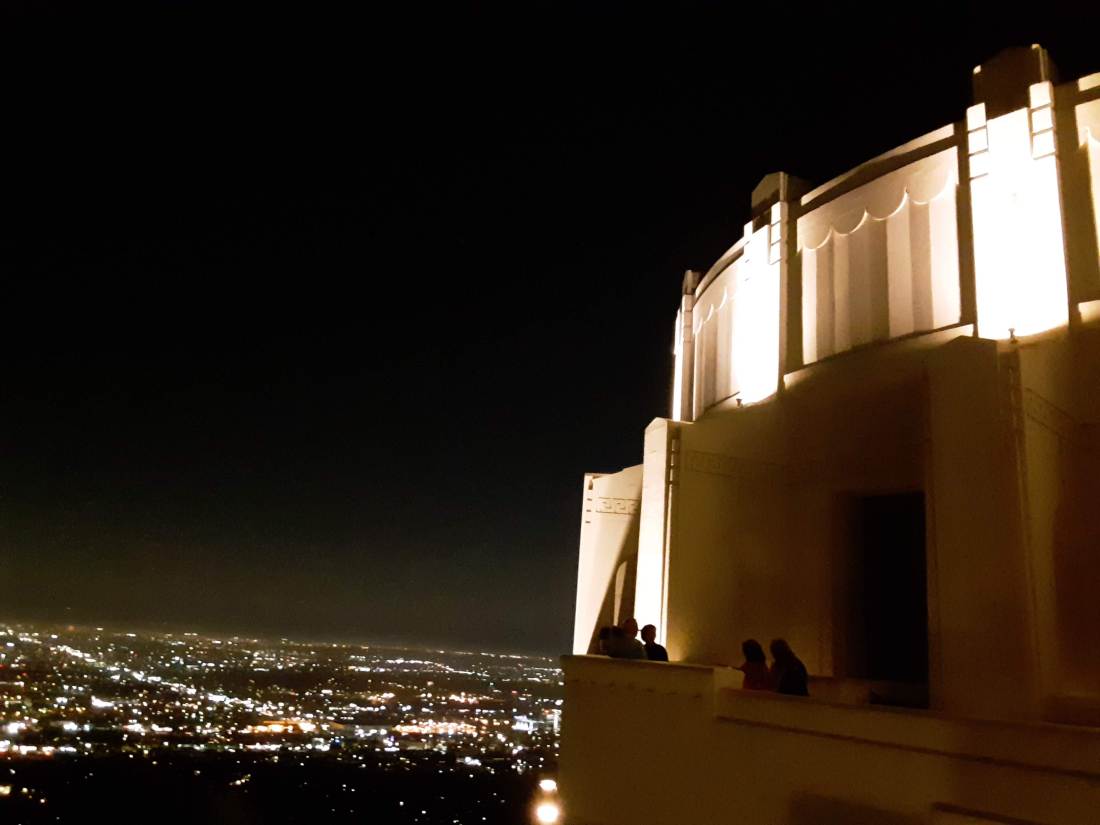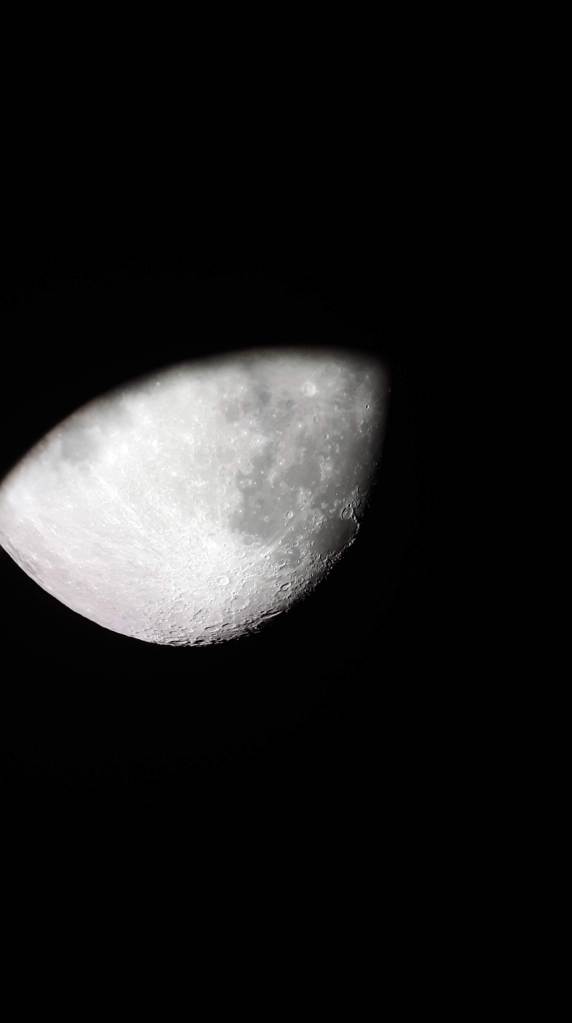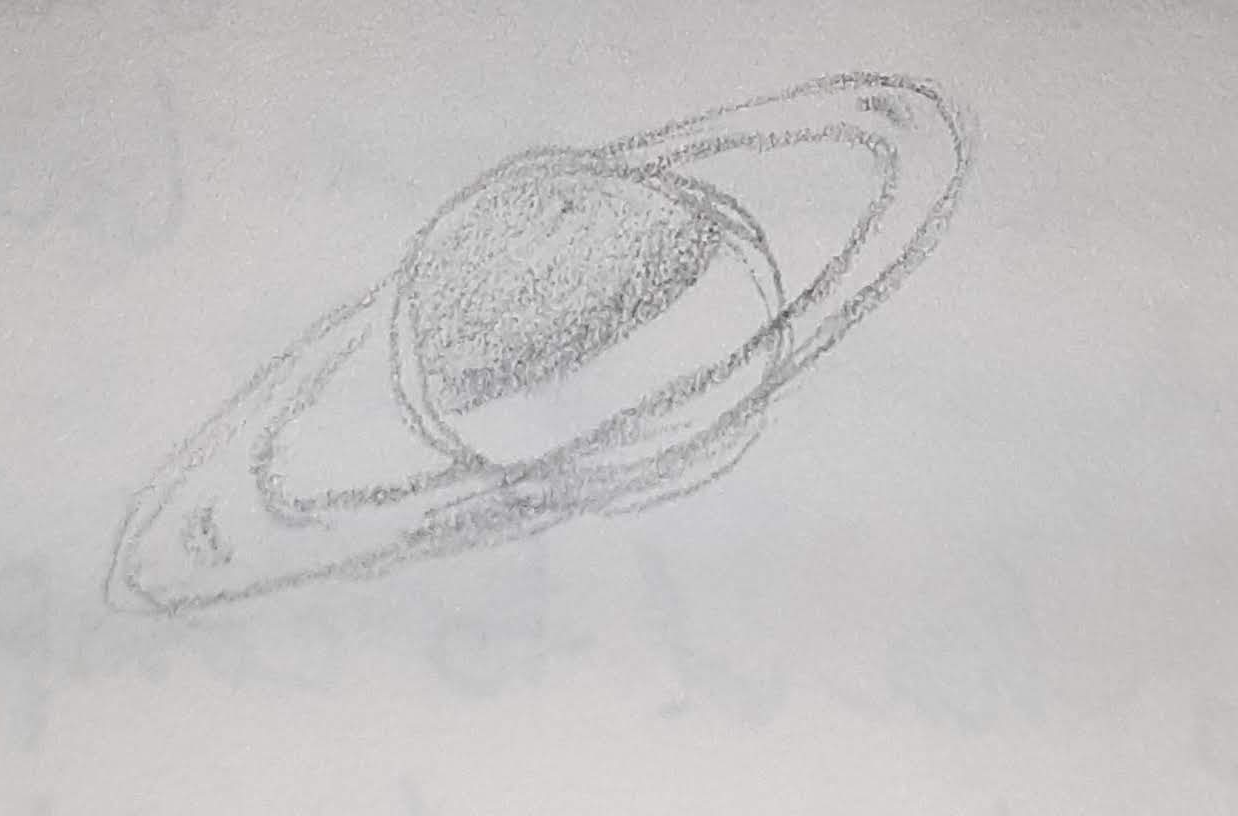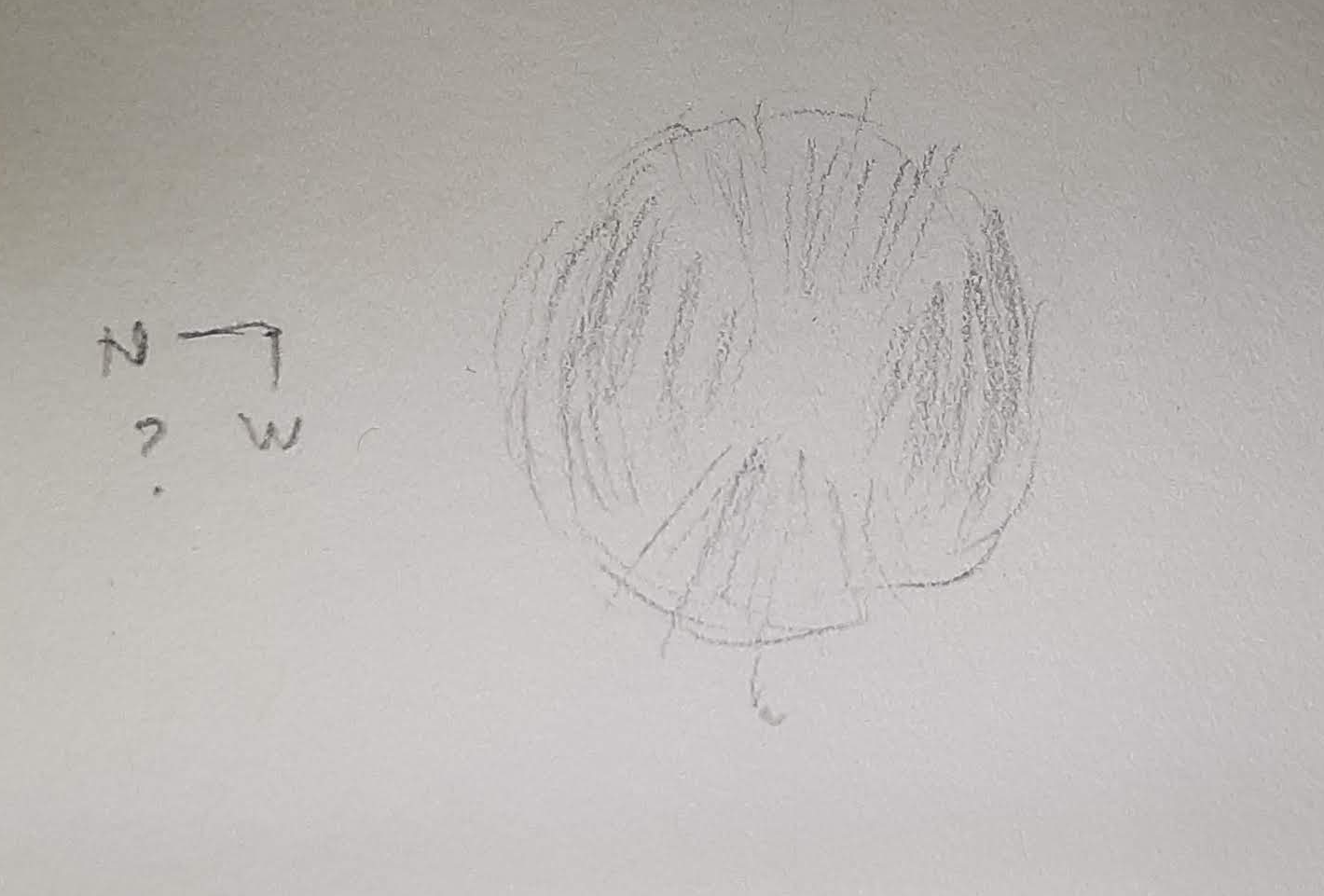In my last entry I described the day I arrived in Los Angeles, including my visit to the California Science Center. That was a Wednesday, August 29, 2018. The next day, according to my journal and my now vague memories, was spent doing laundry, getting groceries, and watching Netflix, a luxury with which I was pretty unfamiliar at the time. Doing laundry was also a luxury, as I didn’t have the opportunity during my week in Arizona, and my last attempt was that time in New Orleans when the machine flooded the kitchen in my apartment. Good times. This was a much better experience than that, entirely without incident. But that’s not why you’re here reading this! So let me tell you about the next day.
Griffith Observatory – Short Form
Here’s what I wrote in my journal a week after I left L.A., then I’ll add some details after that.
Griffith Observatory [is a] classic science center from the 1930s with a huge underground gallery added in 2003. Saw the sky show and got to look through the 12″ Zeiss refractor at Saturn. View was nominal, expected for look over LA, but still glad to have done. Four moons visible, Cassini Division, disk shadow. Stood in line with Gita, a science teacher from India. She was fairly knowledgeable about many things, some more than me, some less. She had never seen a planet through a telescope. I think she was a little disappointed at 175x, but that’s how it goes. There were a lot of people there, which is heartening. Lots of adults.
My Journal, 9/5/2018
Griffith Observatory – Long Form
The Approach
I’m sad that I didn’t write more in my journal, and I’m sad that I haven’t written up my memories before now, because things are getting pretty foggy after two years. But let’s see what we can do here. I was not really familiar with Griffith before going there, so I didn’t know what I was getting into. Well, that’s not entirely right. I had explored the website, of course, so I knew it wasn’t a research facility. And I knew that they had public telescope viewing every clear night. What more do you need to know? Let’s go! Sundown was about 7:30 p.m. local. Since I wanted to do the viewing, I knew it would be a late evening before getting home. Consequently, I wasn’t in a hurry to get there when the doors opened.
It wasn’t very far from my apartment to Griffith, about six miles, but decided to take a Lyft. It was about 4:00 in the afternoon. My driver was an interesting young man, a musician and song writer, as it turned out (hence a Lyft driver?). When I told him I was a pastor on sabbatical, he said he was a PK (“preacher’s kid”) and had learned his love of music in the church. That was cool. So after that pleasant drive, I was in the parking lot. The Griffith is a beautiful building to begin with, but there’s also the view. Griffith Park is in what I think is the Hollywood hills. One reason I think this is you can see the Hollywood sign just opposite the observatory! It was surprising to me to have these lovely, rugged, sort of wilderness hills overlooking one of the most populous cities in the world.

The observatory itself is, again, the beautiful, white, art deco building with a decorative dome and planetarium dome in the center and observing domes on either end. There is a monument in front, also art deco in style, commemorating six great historical astronomers. The approach to the front door also has markers in the sidewalk showing the scale distances of the orbits of the solar system planets. There were quite a number of people of all ages milling about outside, making their way in or out. I was excited to see the inside, because the outside was such a pleasant start.
Remember the Buhl!
Inside, the Griffith Observatory is a classic planetarium. High ceilings, subdued lighting, two main wings for displays and the planetarium / sky show theatre in the back. It reminds me of the Buhl Planetarium in Pittsburgh that I loved when I was a kid. Another similarity is the Foucault pendulum in the lobby. This is a 19th century experiment in which a pendulum, free to swing in any direction, with a very long cable for its arm and a large bob demonstrates the rotation of the earth. The pendulum thinks it is traveling in a the same plane with each swing and wants to do so, but it is actually moving in a slight arc as the earth turns under the pendulum. This is proven by a circle of little pegs set up on the floor that the pendulum very slowly knocks down every so incrementally.
Anyway, the one wing had a variety of telescope models, replicas, and displays including a replica of Galileo’s telescope and a Faraday cage with a big Tesla coil, and the other had various science-y alcoves, ending with displays about the sun. This part is under the solar observatory/coelostat in one of the two domes on the roof. There is a large screen showing an image of the sun’s surface, which unfortunately was blank because the sun was in the minimum phase of its 11-year activity cycle. I enjoyed exploring all these displays for some time.
I took in the sky show in the Oschin Planetarium at about 6pm, as I recall. It was a pretty standard planetarium show with digital images, star patterns, and whatnot projected on the dome with dulcet narration. I don’t really remember the content, just the pleasant contentment of sitting in the big comfy reclining seat in the dim light, digging on the science, and feeling nostalgic about the whole planetarium experience. I always love the giant spider projectors, again, going back to Buhl Planetarium in my childhood, and more recently in the Hopkins Observatory in Williamstown. This one, like many such, is made by Zeiss.
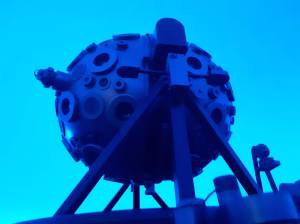
Space, Underground
Had I visited Griffith in my youth, that is all I might have found. Some years ago (2002-2006), though, they underwent a major renovation by adding an enormous gallery and a second theatre underground! They actually have a movie about this in the underground Leonard Nimoy Event Horizon Theater, which I watched dutifully and enthusiastically. It was a fantastic engineering project! They didn’t want to change the beautiful original art deco building, and since it is perched on the edge of a hill, there was no room to expand outward. Their only option was to go down. So they had to figure out how to dig out a cavernous space under the building while artificially supporting said building so it wouldn’t fall into the new hole. This they did successfully! The result more than doubled the size of the facility.

Much of this space is given to the cosmos beyond earth, so the solar system (displays about each of the planets and whatnot, with scale models hanging from the ceiling) and beyond to far-flung galaxies and discussion of cosmology. The entire back wall is a single photographic reproduction of a section of sky that includes the Virgo Cluster of galaxies. According to my notes and a short film telling about it on the floor of the gallery, it is the largest such astronomic reproduction in the world and includes millions of galaxies and hundreds of thousands of foreground stars. The whole area on the sky can be hidden by your thumb at arm’s length. This is brought home by a sculpture of Einstein sitting on a bench holding up his thumb to do exactly that. It is a remarkable display, and all the more because they have telescopes on the balcony that you can use to look at it as if you were under the night sky. I found this to be very cool, as I have explored that region of sky with my own telescopes.
Into the Night
Sunset was about 7:12 p.m. on September 5, 2018, with astronomical twilight lasting until about 8:30 p.m. I don’t remember if they said when the viewing through the big telescope would begin. I do remember getting something to eat at the Cafe at the End of the Universe (with a tip of the hat to Douglas Adams). I’m not sure if I did this before or after looking through the telescope. I think it must have been before, because the time stamps on my pics shows I was at the telescope at 8:52 p.m., and the cafe closes at 9:00, as does the gift shop. I distinctly remember eating in the cafe and then going to the gift shop for some time. I also remember that there was not much available at the cafe other than grab-and-go stuff like microwave hotdogs, which I think is what I had. This was somewhat disappointing as meals go, especially since the cafe is listed under WolfgangPuck.com. I also remember that some staff person was mopping the floor and putting chairs up. My reconstruction is that I was eating at around 8:00, well after the dinner rush. It was a disappointing meal, as I said, also because I was really hungry. It had been pretty long since lunch, and I had been burning a lot of calories in walking and braining. Afterward, as I said, I went to the gift shop where I bought some refrigerator magnets and not much more. At this point I was still thinking I didn’t want to get too many t-shirts, because I had very limited carrying space. Eventually, I gave up on that, as I was able to pack more and more efficiently with every move. But really, this isn’t very important, is it? Let’s get on with it, shall we?
It was in fact dark by 8:30 p.m. when I emerged on the roof. The sky was clear and full of light pollution from the remarkable lights of Los Angeles. The city (at least its downtown) is like a lonely mountain in the middle of plain. Just a flat grid of lights all leading to a central peak of skyscrapers. It is kind of pretty, but of course it blots out all but the brightest stars and planets. The line for viewing through the 12″ Zeiss refractor was long enough but not depressingly so. I fell in, and it took about 20 minutes. As I mentioned above in my journal entry, I got to talking with a science teacher from India named Gita who was ahead of me in line. It took me quite a while to realize she was from India, because she had virtually no discernible accent. I don’t remember much of what we talked about, except that she was well versed in earth sciences but had never seen a planet through a telescope. I remember being eager to engage and encourage her about astronomy, and also feeling somewhat rebuffed. I wish I’d written more down at the time. Otherwise, there were quite a lot of people in line or milling about on the roof. It was a very pleasant night weather-wise, and there was a pleasant atmosphere among the museum patrons, with lots of lighthearted banter and the murmur of many energetic conversations going on at once.
The target for the evening was Saturn, which was high in the southern sky. Venus and Jupiter were low in the west and close to setting if not already set by 8:30. Mars was rising over the city. As you may recall, it was near its close approach but had been covered by a global dust storm since the end of spring. That left Saturn as the best candidate, and let’s face it, Saturn is always a good candidate. The line made its way into the observatory dome and wrapped around and up a narrow wooden staircase to the eyepiece. Staff were stationed here and there to direct and assist, and while I seem to remember someone being at the top of the steps, my pictures show that wasn’t the case. Huh. Anyway, one would go up to the eyepiece, get in a good look, then come back down and head to the exit, and then the next person would go.
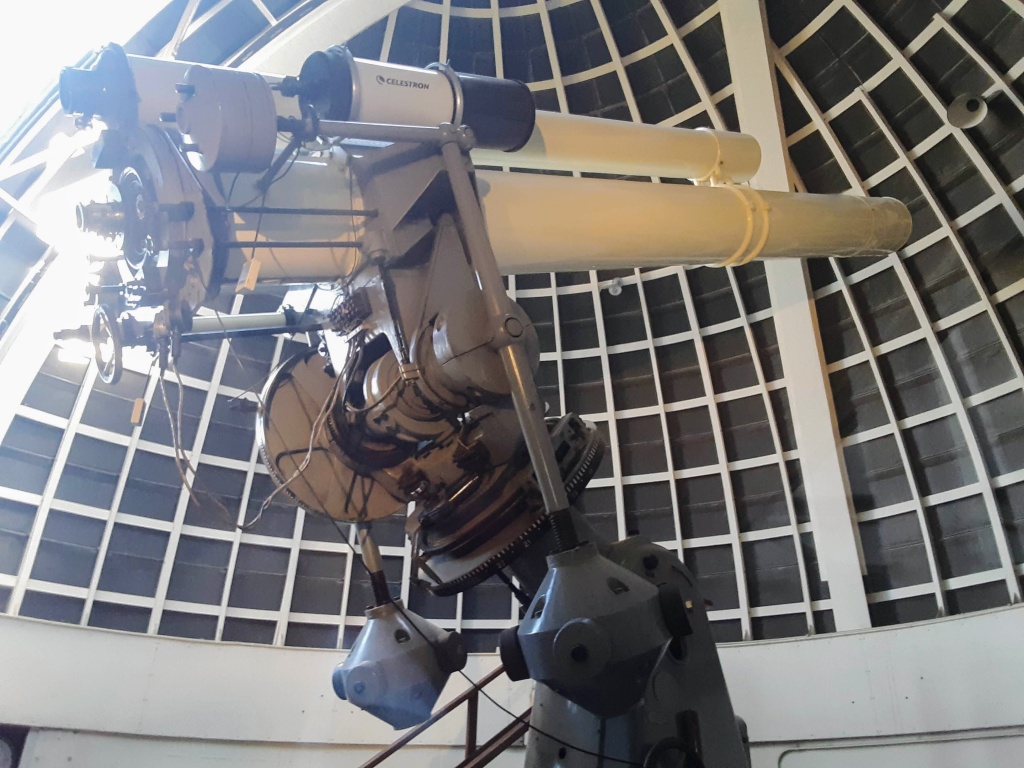
The Zeiss refractor is a 12″ diameter tube, about 16 feet long (f/16, I guess). It has a variety of other scopes mounted with it for guiding, spotting, and additional views, whatnot. The whole lot is on an equatorial fork mount, kind of. As noted above, the view of Saturn was, well, standard and adequate. Since Yerkes I had been tempering my expectations, and what would one expect of heavily light-polluted skies over a major metropolis? So, the seeing wasn’t great, kind of wavy. The magnification was 175x, which I can often beat at home. On the other hand, it is a 12″ refractor, so lots of photons to look at, which makes for a brighter image, which probably counters the light pollution some. Plus, it’s the Griffith Observatory Zeiss refractor, which is said to have had more humans look through it than any other telescope in the world. That makes it worth being on my list.
After admiring the view of Saturn for a minute or so and then the view of Los Angeles for a while, I decided to call it a night. I made my way to the parking lot and called for a Lyft, which was also true of about a few hundred of my close Griffith friends, or so it seemed. Anyway, it was pretty crowded. While I waited for my ride, I could hear the sounds of baseball from the valley below, which was I guess coming from Dodgers Stadium, about 5 miles away. It sounded like it was just over the hill from me. My Lyft driver had to make a couple passes, as I didn’t see him on the first one. We eventually connected, though, and had a quiet ride back to my abode, as he was pretty much the opposite of the driver I had on the way to Griffith. Well, it takes all kinds.
Conclusion
My trip to Griffith was a delight. I thoroughly enjoyed the blend of old and new, nostalgia and innovation on display there, as well as just soaking up the astronomical goodness of it all. I was very pleased to see how many people, and particularly adults, were there, not just for the displays but for the nighttime observing, on a Wednesday. Although I hadn’t been familiar with Griffith before, I am really glad I put it on my list and that I got to look through their historic Zeiss refractor. With the possible exception of those hot dogs for dinner, it was a wonderful experience.
To see the rest my pictures from the Griffith, click >HERE<.
